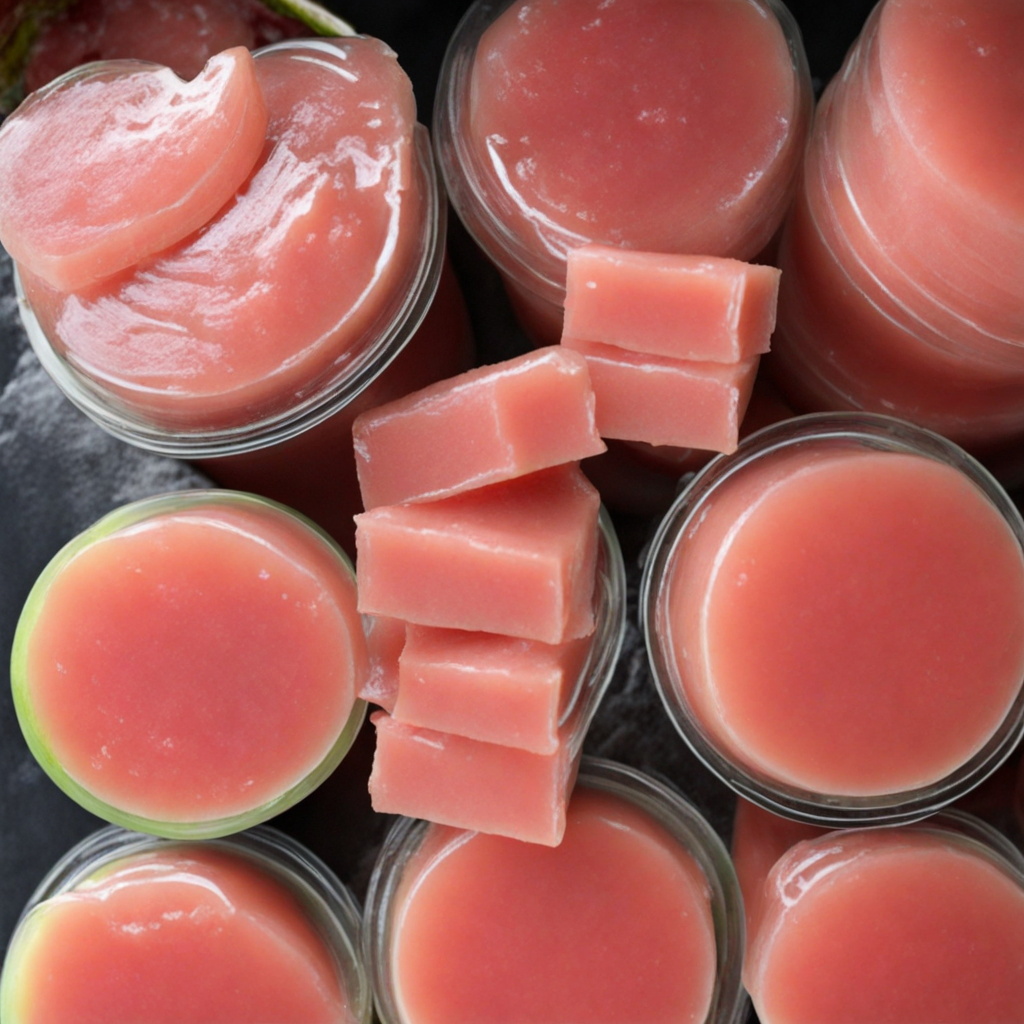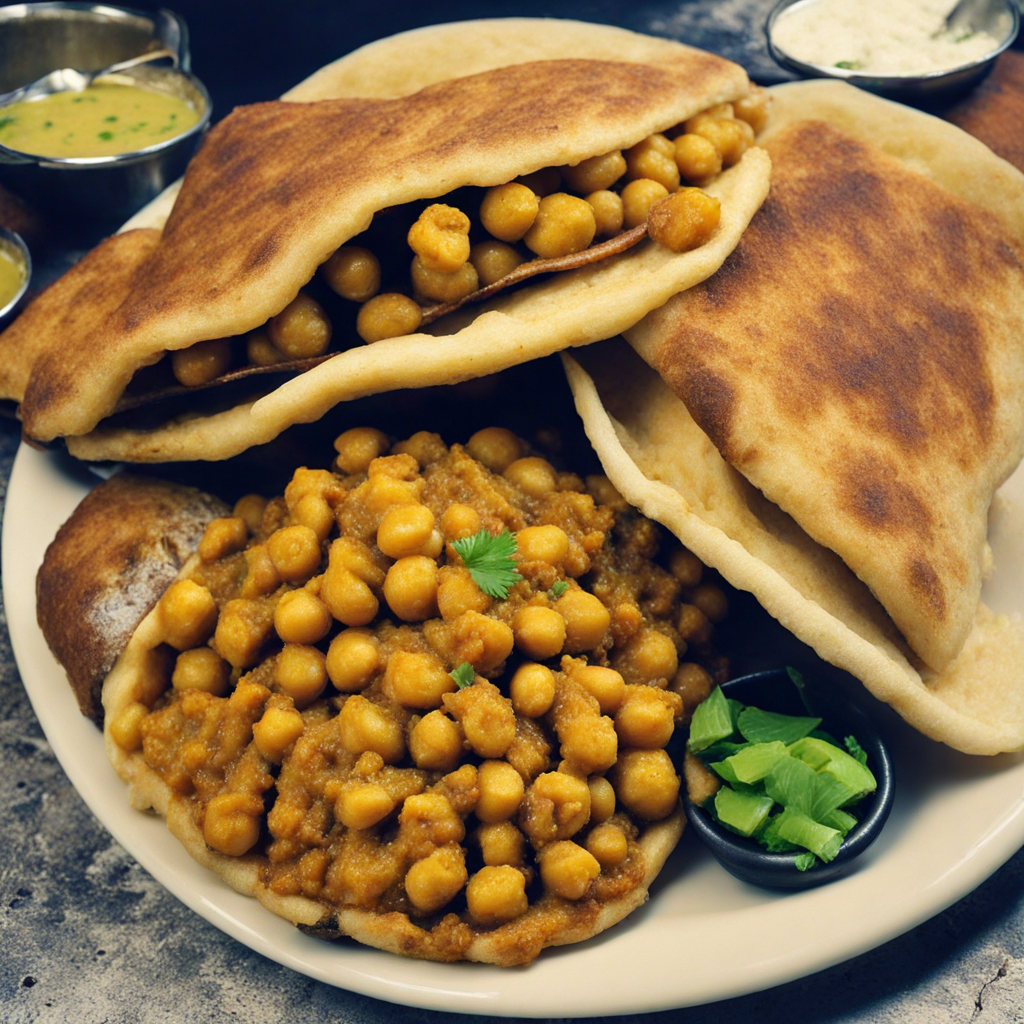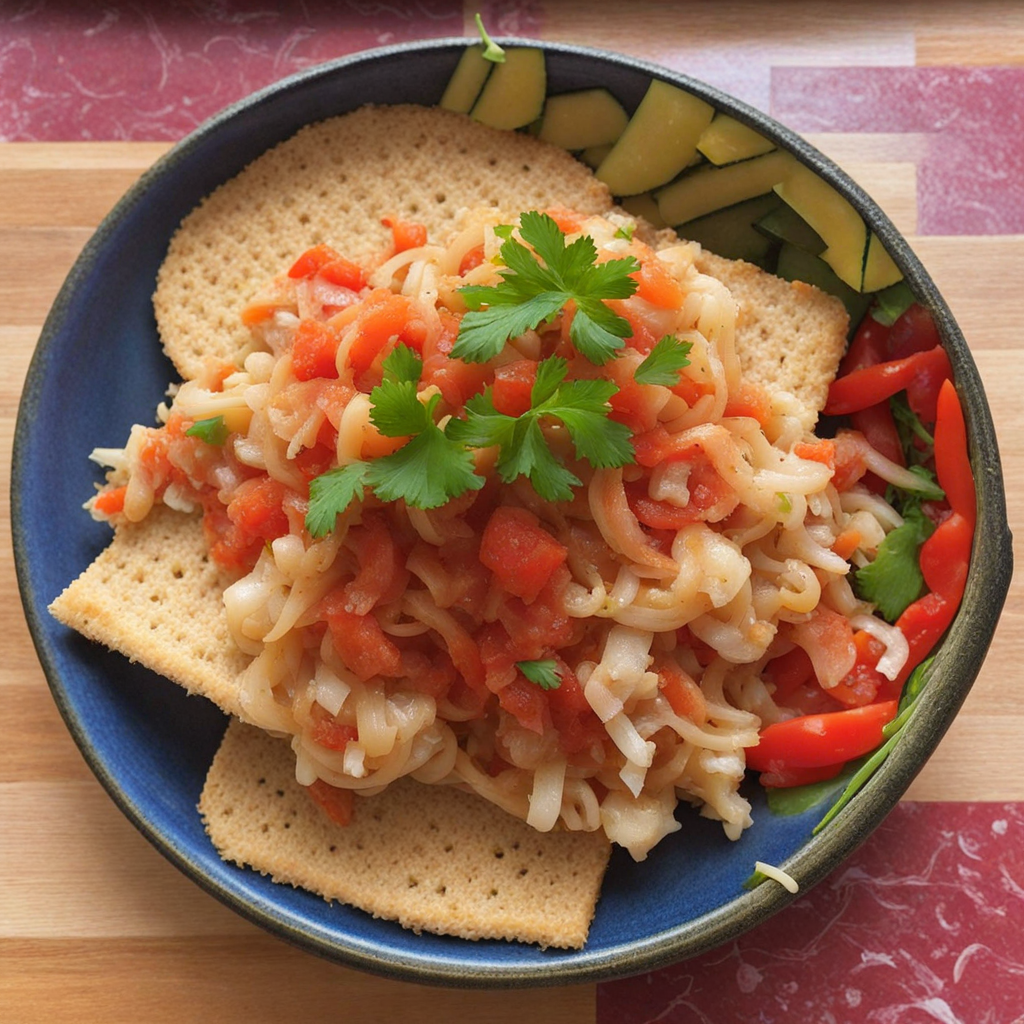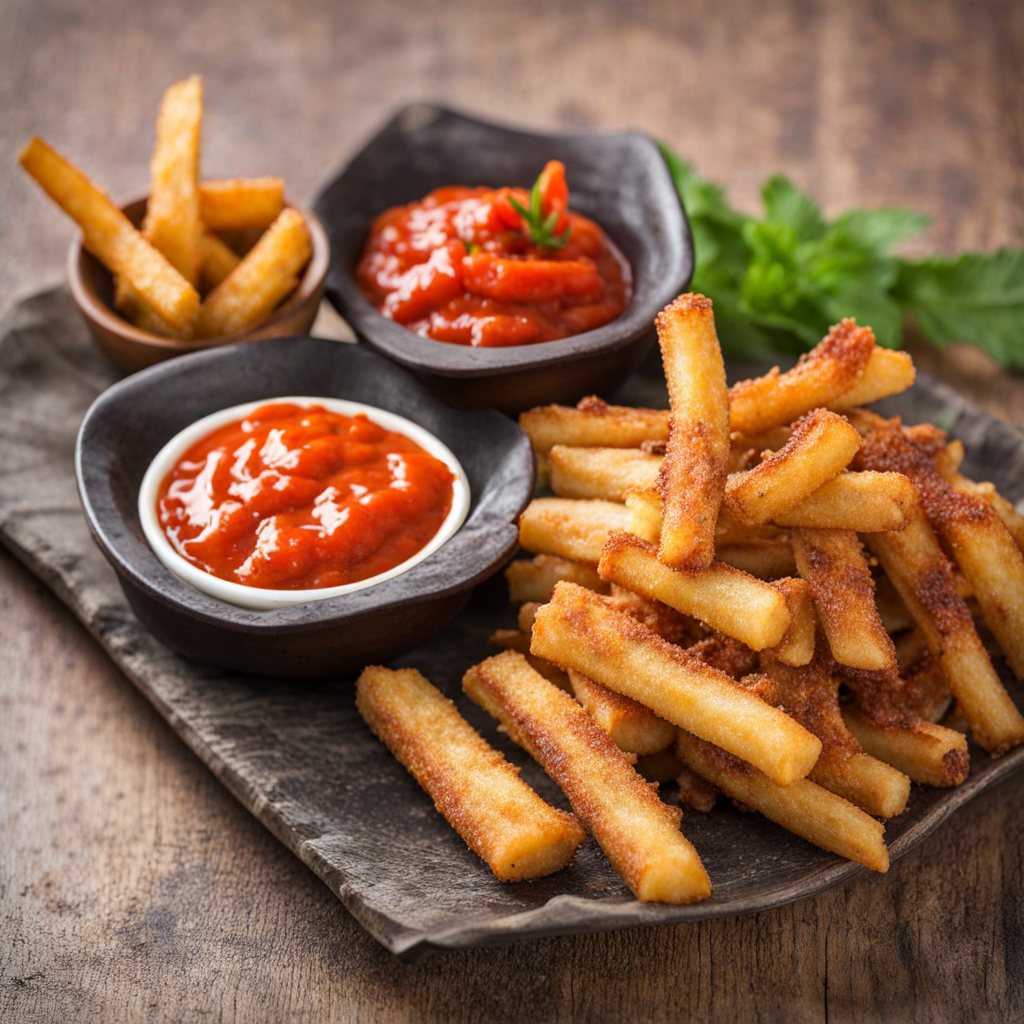Guava Cheese
Guava Cheese, a delightful treat from Trinidad and Tobago, is a unique confection that encapsulates the vibrant flavors of the Caribbean. This sweet delicacy is made primarily from the ripe guava fruit, which is cooked down with sugar until it reaches a thick, jelly-like consistency. The process enhances the natural sweetness of the guava, resulting in a rich, fruity flavor that is both aromatic and pleasantly tangy. Unlike traditional cheese, Guava Cheese is a gelatinous treat, often sliced into squares or rectangles, making it easy to enjoy as a snack or dessert. The texture of Guava Cheese is one of its most appealing features. It boasts a firm yet slightly chewy consistency, which contrasts beautifully with its luscious sweetness. The bright pink or yellowish hue is visually striking, inviting those who encounter it to indulge in its unique taste. Guava Cheese is frequently enjoyed on its own or paired with cheese, crackers, or even as a topping for bread, creating a harmonious blend of flavors that’s sure to excite the palate. Additionally, it can be a delightful addition to cheese boards or a creative element in various desserts. What sets Guava Cheese apart is not just its flavor but also its cultural significance. This treat is often associated with local festivals and celebrations, making it a nostalgic reminder of the rich culinary heritage of Trinidad and Tobago. Its popularity continues to grow beyond the Caribbean, as food enthusiasts around the world seek to explore the diverse flavors of this region. With each bite, Guava Cheese offers a taste of tropical paradise, making it a must-try for anyone eager to discover new and exciting flavors.
How It Became This Dish
Guava Cheese: A Sweet Slice of Trinidad and Tobago's Culinary History Guava cheese, a beloved delicacy in Trinidad and Tobago, is a vibrant testament to the rich tapestry of the Caribbean's culinary heritage. This sweet treat, made from ripe guavas and sugar, has roots that delve deep into the region's history, influenced by indigenous practices, colonial trade, and the diverse cultures that have shaped the islands. Origins The guava, a tropical fruit native to Central America and the Caribbean, is believed to have been cultivated by the indigenous peoples long before European colonization. The fruit's sweet, aromatic flesh and distinctive flavor made it a staple, not just for sustenance but also for medicinal purposes. With its adaptability to various climates, the guava thrived in the warm, tropical environment of Trinidad and Tobago, becoming a popular fruit among the local population. When the Europeans arrived in the Caribbean, they encountered the guava and quickly recognized its potential. Spanish and English colonizers began to cultivate the fruit, integrating it into their diets and local recipes. The introduction of sugarcane to the islands during the 17th century, driven by the transatlantic slave trade and the establishment of sugar plantations, further transformed the culinary landscape. Sugar became a crucial commodity, and its integration with local fruits like guava led to the creation of new confections, including guava cheese. The Evolution of Guava Cheese The recipe for guava cheese is relatively simple, yet it embodies the complexity of Trinidadian culinary traditions. Traditionally, ripe guavas are boiled and pureed, mixed with sugar, and then cooked down until it reaches a thick, jelly-like consistency. Once cooled, the mixture is often poured into molds and left to set, resulting in a dense, sweet treat that can be sliced into firm blocks or squares. The process of making guava cheese reflects a broader pattern of Caribbean cooking that emphasizes preservation techniques. In a time before refrigeration, preserving fruits through cooking and sweetening was essential for ensuring food security during off-seasons. Guava cheese, along with other fruit cheeses and preserves, became a popular way to enjoy the tropical bounty year-round. Cultural Significance Guava cheese is more than just a dessert; it embodies the spirit of Trinidad and Tobago's cultural identity. The dish is often served during festive occasions, family gatherings, and local celebrations, making it a staple in both domestic kitchens and commercial establishments. At events such as Carnival, which showcases the vibrant culture of Trinidad and Tobago, guava cheese often finds its way into the array of local delicacies offered to revelers. The snack is also deeply interwoven with the traditions of various ethnic communities on the islands. The fusion of indigenous, African, Indian, and European influences in Trinidad and Tobago's culinary scene is reflected in the diverse ways guava cheese is enjoyed. For instance, it is often paired with cheese, crackers, or bread, creating a delightful contrast of flavors and textures that appeal to a wide range of palates. Additionally, guava cheese has garnered a reputation as a symbol of local craftsmanship. Artisans and small-scale producers take pride in their unique recipes and methods, often passed down through generations. This artisanal approach to guava cheese-making has fostered a sense of community, as families and friends come together to create and share this beloved treat. Development Over Time The popularity of guava cheese has continued to grow, both locally and internationally. With the rise of culinary tourism and the increasing interest in Caribbean cuisine, guava cheese has begun to attract attention beyond the shores of Trinidad and Tobago. Food enthusiasts and chefs alike have embraced this traditional sweet, incorporating it into modern dishes and innovative culinary creations. In recent years, guava cheese has found its way onto the menus of gourmet restaurants and food festivals, where it is often featured in creative pairings with cheeses, charcuterie, and artisanal breads. This evolution not only highlights the versatility of guava cheese but also contributes to the preservation of Trinidad and Tobago's culinary heritage in a globalized world. The rise of social media has played a pivotal role in popularizing guava cheese. Food bloggers and influencers have shared their experiences, recipes, and creative interpretations, further solidifying its status as an iconic Caribbean treat. The visual appeal of guava cheese, with its vibrant color and enticing texture, has made it a favorite among photographers and food enthusiasts alike. Challenges and Contemporary Relevance Despite its enduring popularity, guava cheese faces challenges in the modern culinary landscape. The availability of fresh guavas can fluctuate due to climate change and agricultural practices, impacting local production. Additionally, the rise of mass-produced alternatives can overshadow traditional artisanal methods, threatening the integrity of the craft. To combat these challenges, many local producers and farmers are advocating for sustainable practices and the preservation of traditional recipes. By focusing on quality and authenticity, they strive to keep guava cheese at the forefront of Trinidad and Tobago's culinary identity. Initiatives that promote local farming and traditional foodways are gaining momentum, ensuring that future generations can savor this sweet slice of history. Conclusion Guava cheese is more than just a sweet treat; it is a cultural artifact that tells the story of Trinidad and Tobago's rich history and diverse influences. From its indigenous roots and colonial adaptations to its evolution as a beloved staple in modern cuisine, guava cheese encapsulates the essence of Caribbean identity. As the world continues to embrace the flavors of Trinidad and Tobago, guava cheese stands as a delicious reminder of the islands' vibrant culinary heritage, inviting all to partake in its sweet legacy.
You may like
Discover local flavors from Trinidad And Tobago







